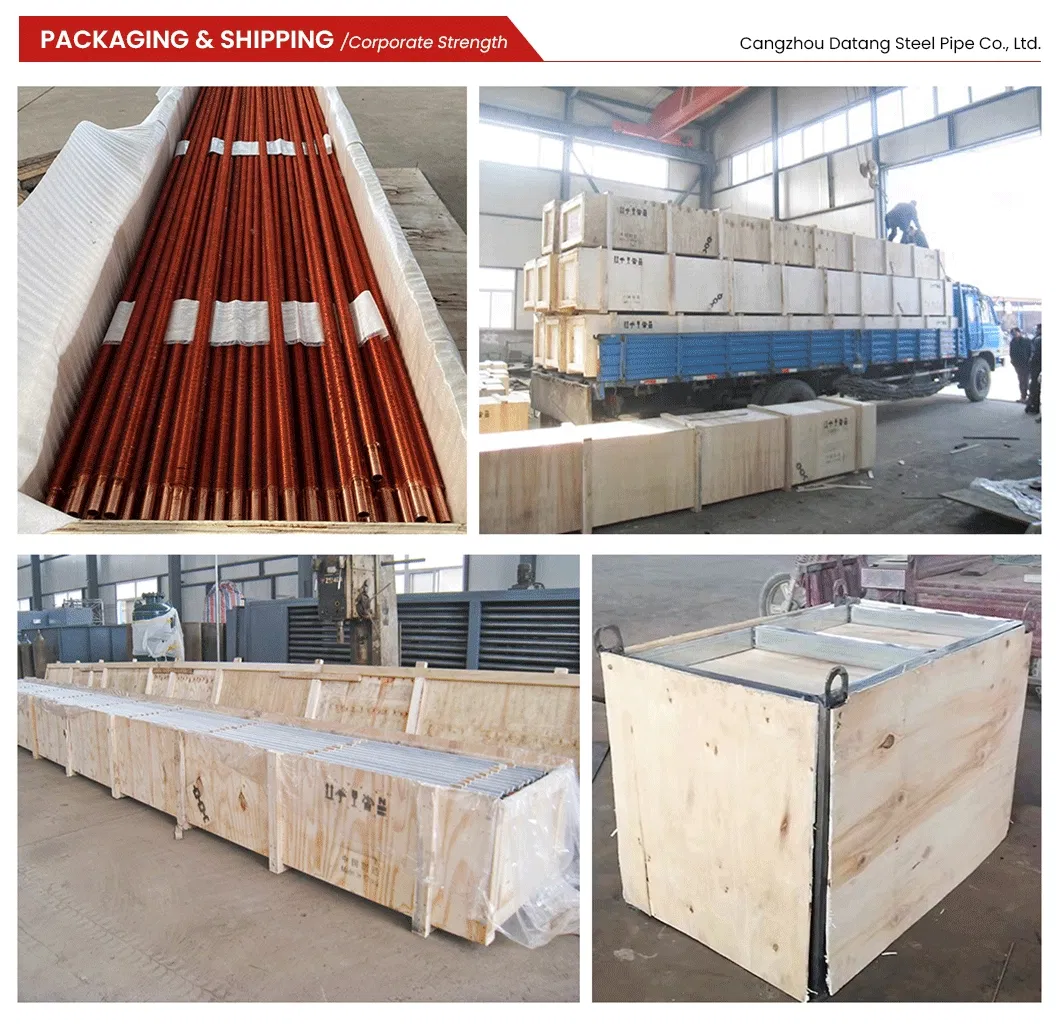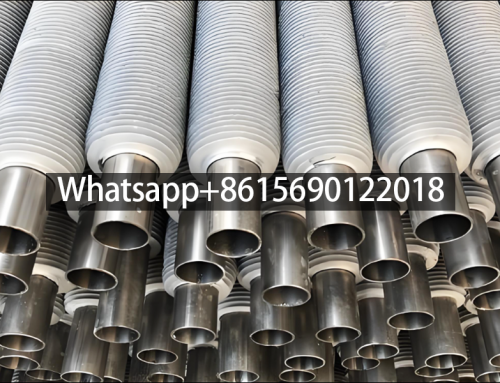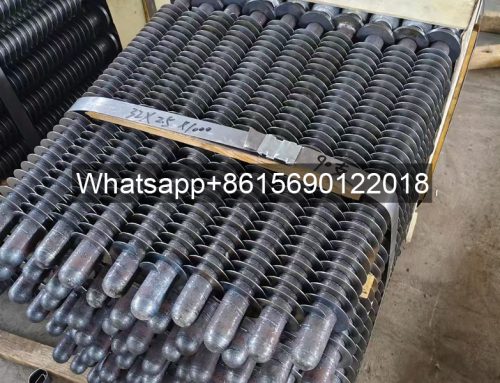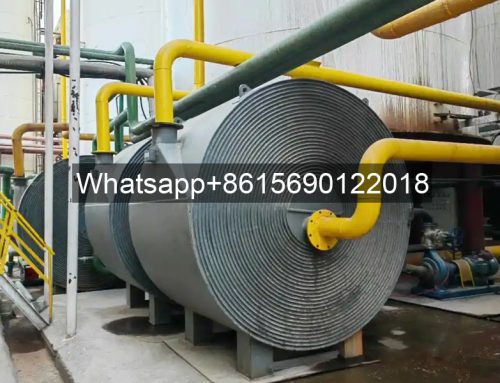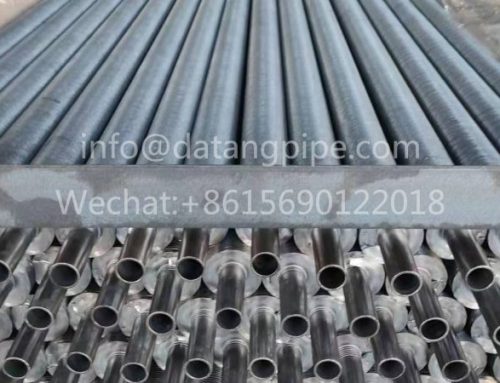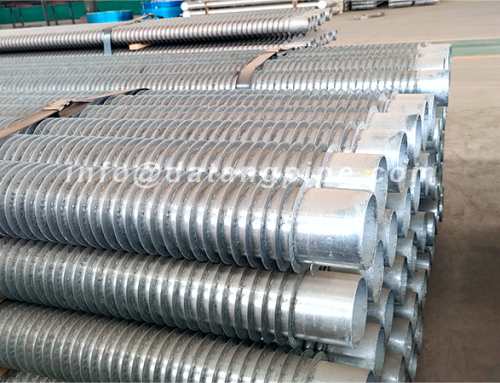Why L Type Finned Tubes Are Used in Air Coolers?
The core reason for choosing L type finned tubes for air coolers is that their unique structural design effectively solves the problem of low air-side heat transfer efficiency. The specific advantages are as follows:
I. Heat Transfer Enhancement Mechanism
Increased Heat Transfer Area
L type finned tubes use a winding process to create trapezoidal fin cross-sections, increasing the heat transfer area by 5-10 times compared to plain tubes. This design directly compensates for the low air heat transfer coefficient (15-50 kcal/(m2)). 2⋅h⋅℃) is consistent with the engineering logic of increasing the heat transfer amount Q by increasing the area A in the heat transfer equation Q=KAΔt.
Reduced Contact Thermal Resistance
Unlike finned tubes with serrated fins, the trapezoidal cross-section of the L type fins is tightly integrated with the base tube, eliminating the contact thermal resistance caused by gaps between the fins and improving heat transfer efficiency by approximately 20%.
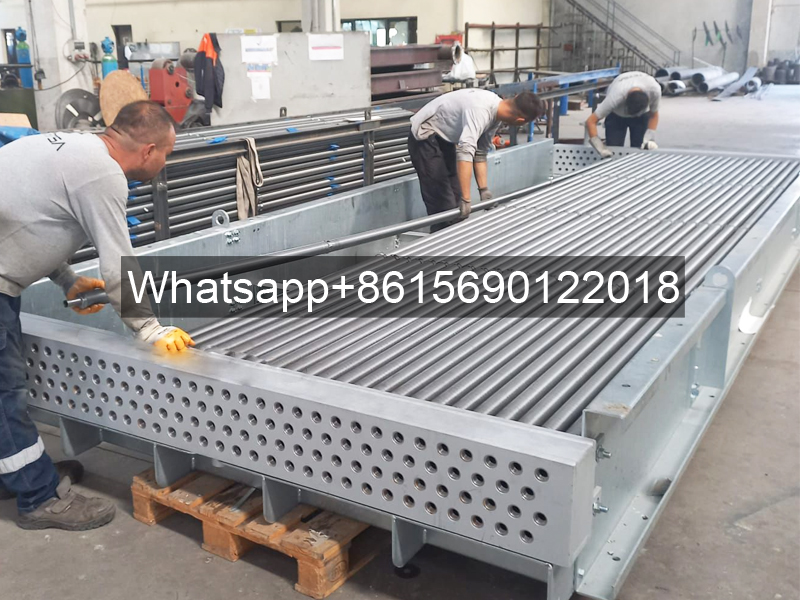
Fin Fan Cooler Oil and Gas Manufacturer and Suppliers in China
II. Structural Performance Advantages
Material Compatibility: Aluminum or copper fins are lightweight and corrosion-resistant, while the base tube (typically steel) is protected from air erosion, extending its service life.
Process Efficiency: Wrapping The winding process achieves uniform fin pitch and high production efficiency, making it suitable for large-scale industrial applications.
Compactness: For the same heat transfer requirements, L type finned tubes consume 60% less space than plain tubes, aligning with the trend toward smaller equipment.
III. Application Compatibility
L type finned tubes are particularly suitable for air coolers in industries such as petrochemicals and power generation. Their extra-long design (up to 6 meters) covers large airflow spaces and creates a uniform temperature field (within ±2°C). Furthermore, the steel-aluminum composite L-shaped finned tubes are rolled to achieve an integrated tube-fin structure, further minimizing heat loss due to contact.
An L-type finned tube is a heat exchange element created by folding a metal strip (such as aluminum or copper) into an L-shape and then spirally wrapping it around the outer surface of a base tube. Its core advantages lie in its simple structure, manageable costs, and effective increase in heat transfer area.
Structure and Process Characteristics of L-Type Finned Tubes
Filing Process
L-type finned tubes are made by folding a metal strip (such as aluminum) into an L-shape and then spirally wrapping it around the outer surface of a base tube under tension, creating fins with a trapezoidal cross-section. This process offers high production efficiency and is suitable for large-scale production, but the contact thermal resistance is relatively high (approximately 0.0015 m2·K/W).
Improved: LL-type fin tubes enhance corrosion resistance by adding a root cover to the L-type. KL-type fin tubes utilize a knurling process to enhance bonding strength, reducing the contact thermal resistance to below 0.0005 m2·K/W.

Aluminium L-foot Tension Fin Tubes Manufacturers and Suppliers
L-Type Fin Tube Performance Parameters
Operating Temperature: Conventional L-type fin tubes have a temperature resistance of ≤150°C, while KL-type fin tubes can reach 250°C.
Fin Pitch and Fin Height: Fin pitch is typically 3-6 mm, and fin height is ≤15 mm. Due to process limitations, the heat transfer area is relatively limited.
L-Type Fin Tube Material Selection
Base Tube Material
Carbon Steel: Low cost (e.g., Q235 steel) ), requires galvanizing for corrosion protection and is suitable for dry environments (such as residential heating).
Stainless steel: 304 stainless steel is resistant to mild corrosion, while 316L stainless steel is resistant to chloride ion corrosion and is suitable for chemical and coastal environments.
Copper tubes: Excellent thermal conductivity (401 W/(m·K)), but high cost, mostly used for precision temperature control.
Fin materials
Aluminum fins: Lightweight, good thermal conductivity (237 W/(m·K)), low cost, but prone to oxidation at high temperatures, requiring use with steel-based pipes (steel-aluminum composite).
Copper fins: Highly corrosion-resistant, suitable for high-humidity or corrosive media, but high-temperature oxidation is a concern.
Bimetallic composites: For example, steel-aluminum composite pipes (steel pipes for pressure bearing + aluminum fins for heat exchange) offer a balance of strength and efficiency, with low contact thermal resistance.
Fin Tube Packaging
